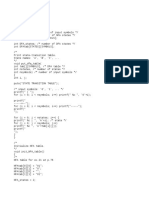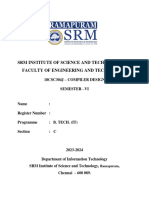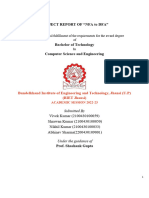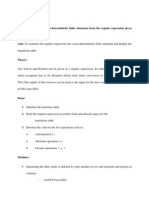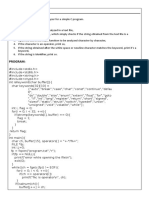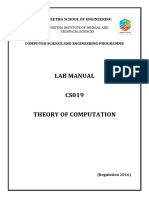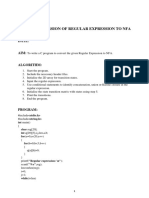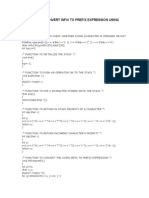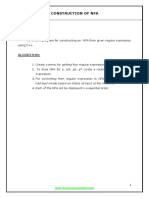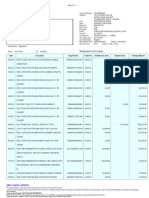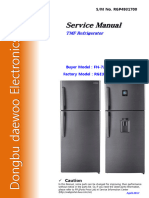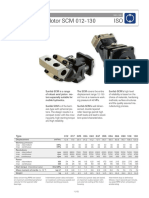0% found this document useful (0 votes)
19 views6 pagesCompiler Design First Two Program
The document contains two C programs: the first implements a lexical analysis phase for tokenization, identifying identifiers, numbers, operators, and special symbols from input strings. The second program converts a Non-deterministic Finite Automaton (NFA) to a Deterministic Finite Automaton (DFA), utilizing structures to represent states and transitions. Both programs demonstrate fundamental concepts in compiler design and automata theory.
Uploaded by
suportgoooglehlpCopyright
© © All Rights Reserved
We take content rights seriously. If you suspect this is your content, claim it here.
Available Formats
Download as DOCX, PDF, TXT or read online on Scribd
0% found this document useful (0 votes)
19 views6 pagesCompiler Design First Two Program
The document contains two C programs: the first implements a lexical analysis phase for tokenization, identifying identifiers, numbers, operators, and special symbols from input strings. The second program converts a Non-deterministic Finite Automaton (NFA) to a Deterministic Finite Automaton (DFA), utilizing structures to represent states and transitions. Both programs demonstrate fundamental concepts in compiler design and automata theory.
Uploaded by
suportgoooglehlpCopyright
© © All Rights Reserved
We take content rights seriously. If you suspect this is your content, claim it here.
Available Formats
Download as DOCX, PDF, TXT or read online on Scribd
/ 6










